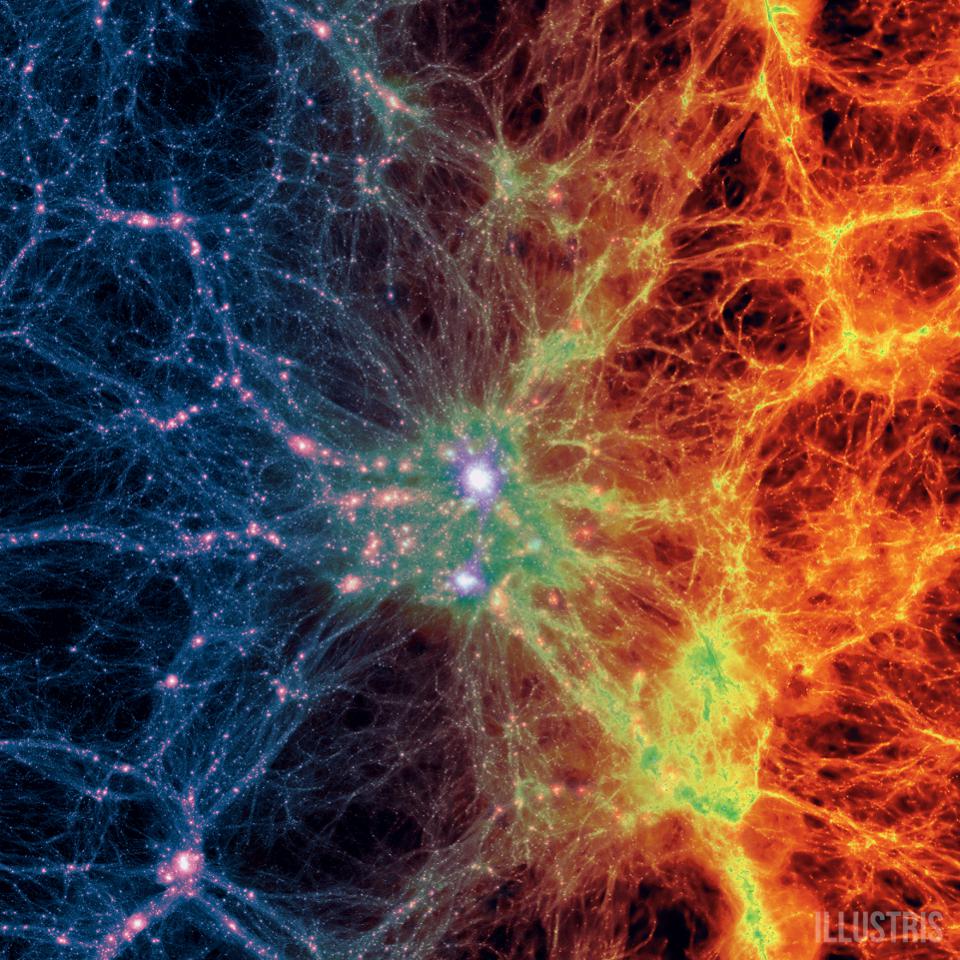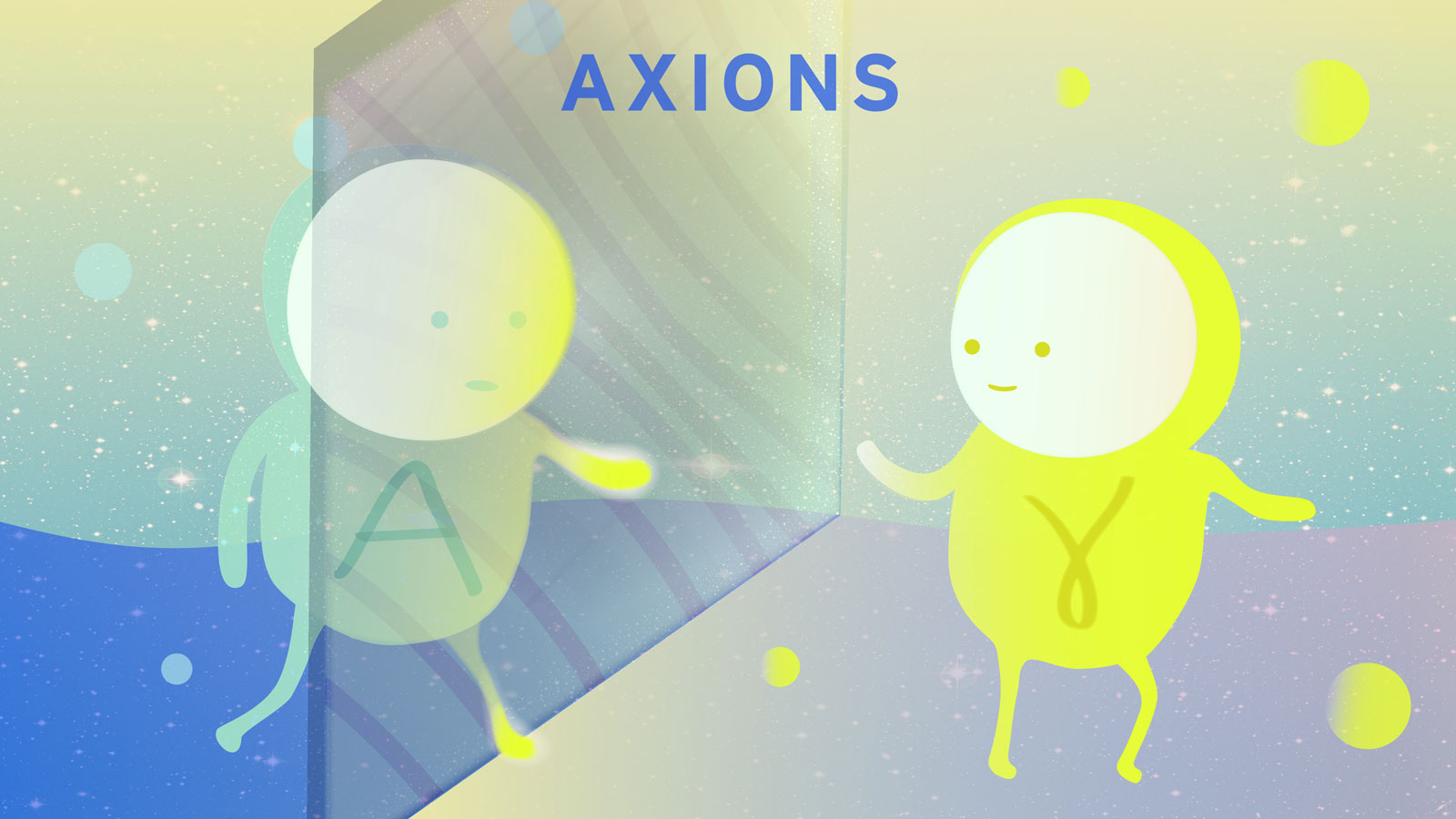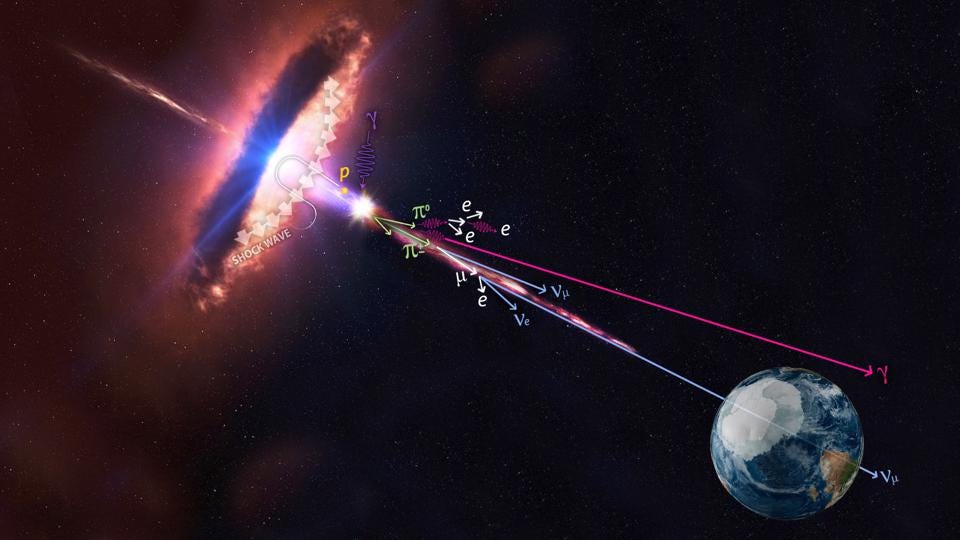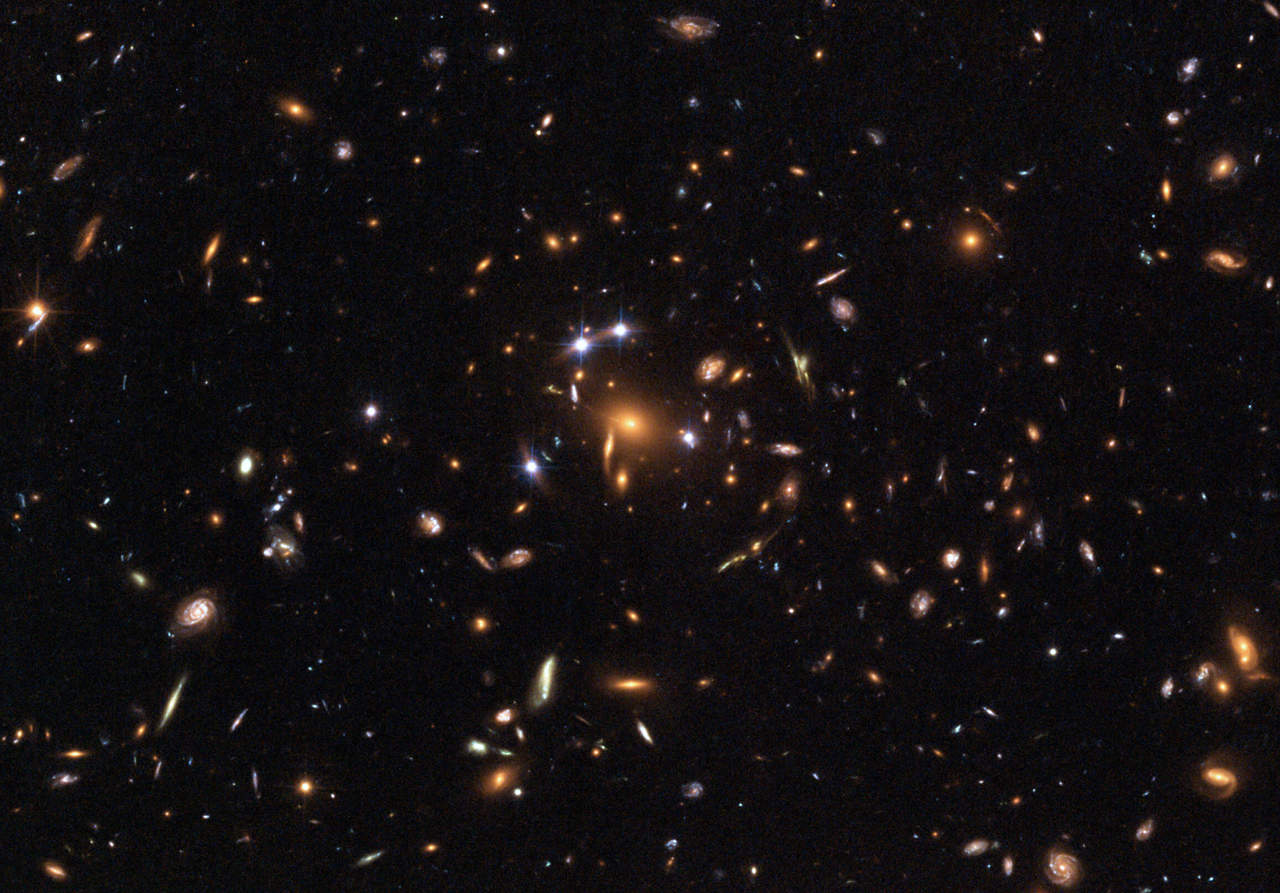XENON’s experimental triumph: No dark matter, but the best “null result” in history

- When you're attempting to detect something you've never seen before, it's easy to fool yourself into thinking you've found what you're seeking.
- It's much more difficult to be careful, precise, and pristine, and to set the greatest limits ever on what's ruled out and what remains possible.
- In the attempt to directly detect dark matter, the XENON collaboration just broke all previous records, bringing us closer than ever to knowing what dark matter can, and can't, actually be.
More than 100 years ago, the foundations of physics were thrown into utter chaos by an experiment that measured absolutely nothing at all. Knowing that the Earth moved through space as it rotated on its axis and orbited the Sun, scientists sent beams of light in two different directions — one along the Earth’s direction of motion, and one perpendicular to it — and then reflected them back to their starting point, recombining them upon arrival. Whatever shift the Earth’s motion would have caused within that light would be imprinted on the recombined signal, allowing us to determine the true “rest frame” of the Universe.
And yet, there was absolutely no shift observed at all. The Michelson-Morley experiment, despite achieving a “null result,” would wind up transforming our understanding of motion within the Universe, leading to the Lorentz transformations and special relativity thereafter. Only by achieving such a high-quality, high-precision result could we learn what the Universe was and wasn’t doing.
Today, we understand how light travels, but other, more difficult-to-solve puzzles remain, like figuring out the nature of dark matter. With their latest, greatest results, the XENON collaboration broke their own record for sensitivity to how dark matter could possibly be interacting with atom-based matter. Despite a “null result,” it’s one of the most exciting results in experimental physics history. Here’s the science of why.

Indirectly, the evidence for dark matter comes from astrophysically observing the Universe and is absolutely overwhelming. Because we know how gravitation works, we can calculate how much matter needs to be present in various structures — individual galaxies, in pairs of interacting galaxies, within clusters of galaxies, distributed throughout the cosmic web, etc. — to explain the properties we observe. The normal matter in the Universe, made out of things like protons, neutrons, and electrons, simply isn’t enough. There has to be some other form of mass out there, not described by the Standard Model, in order for the Universe to behave in the ways we actually observe it to be behaving.
Indirect detections are incredibly informative, but physics is a science with greater ambitions than to simply describe what’s occurring in the Universe. Instead, we hope to understand the details of each and every interaction that occurs, allowing us to predict with great precision what the outcome of any experimental setup will be. For the problem of dark matter, that would mean understanding the specific properties of exactly what it is that makes up the dark matter in our Universe, and that includes understanding how it interacts: with itself, with light, and with the normal, atom-based matter that composes our own bodies here on Earth.
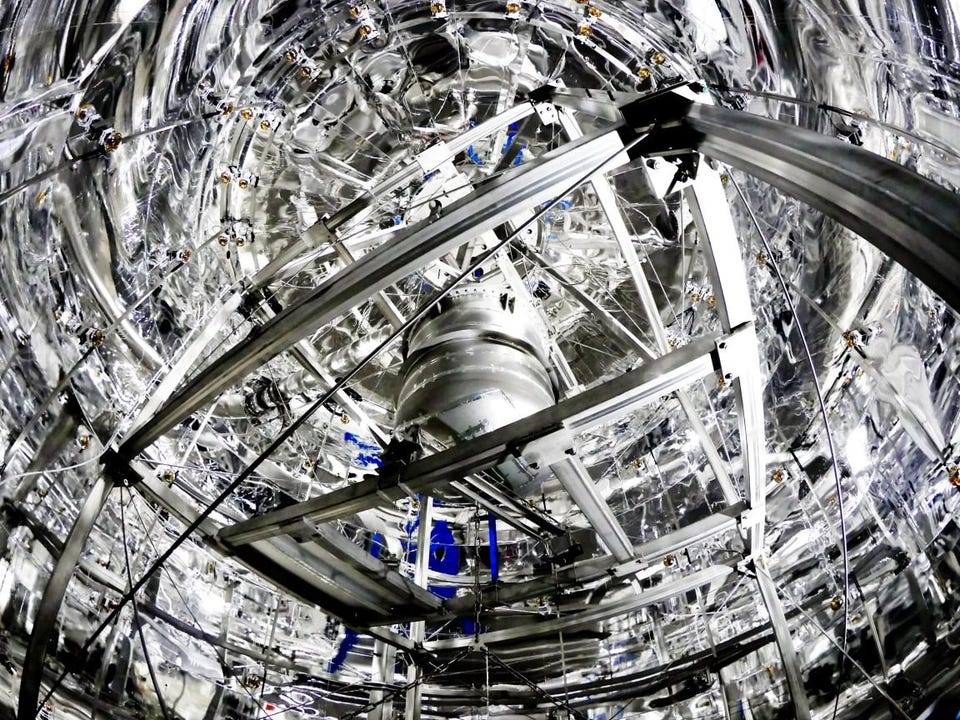
The XENON collaboration has been running experiments for many years now, attempting — in a very specific way — to directly detect dark matter. The idea of the XENON experiment is, in principle, actually very simple and can be explained in just a few steps.
- Step 1: Create a pristine target for dark matter to potentially interact with. They chose large quantities of xenon atoms, since xenon is a noble gas (non-chemically reactive) with a large number of protons and neutrons in its nucleus.
- Step 2: Shield this target from all potential sources of contamination, like radioactivity, cosmic rays, atmospheric phenomena, the Sun, etc. They do this by building the detector deep underground, and setting up a series of “veto” signals to remove known contaminants.
- Step 3: Build a detector that’s extremely sensitive to any signals that could arise from the process you’re interested in observing. In the case of this experiment, this is what’s known as a time projection chamber, where a collision between a xenon atom and any particle will create a trail-like signature that can be reconstructed. Of course, dark matter particles aren’t the only signature that will show up, and that’s why the next step is…
- Step 4: Understand the remaining background precisely. There will always be signals you can’t remove: neutrinos from the Sun, natural radioactivity from the surrounding Earth, cosmic ray muons that make it all the way down through the intervening Earth, etc. It’s important to quantify and understand them, so that they can be properly accounted for.
- Step 5: And then, by measuring any signal that appears and sticks out above the background, determine what possibilities remain for how dark matter could be interacting with your target material.

The true beauty of the XENON experiment is that it is, by design, scalable. With each successive iteration of the XENON experiment, they’ve increased the amount of xenon present in the detector, which in turn increases the sensitivity of the experiment to any interaction that may be present between dark matter and normal matter. If even 1-in-100,000,000,000,000,000,000 xenon atoms would have gotten struck by a dark matter particle over the course of a year, resulting in an exchange of energy and momentum, this setup would be able to detect it.
Over time, the XENON collaboration has gone from kilograms to hundreds of kilograms to a tonne to now 5.9 tonnes of liquid xenon as their “target” in the experiment. (Which is why the current iteration of the experiment is known as XENONnT, because it’s an upgrade to “n” tonnes of xenon target, where n is now substantially greater than 1.) Simultaneously, with each successive upgrade to the experiment, they’ve also been able to reduce what they call the “experimental background” by better understanding, quantifying, and shielding the detector from confounding signals that could mimic a potential dark matter signature.

One of the remarkable properties of the XENON collaboration’s experiments is that they’re sensitive to potential signals that cover a factor of more than one million in terms of energy and mass. Dark matter, although we know (from the indirect astrophysical evidence) how much of it must be present throughout the Universe, could take the form of:
- a large number of small-mass particles,
- a moderate number of intermediate-mass particles,
- a lower number of heavy-mass particles,
- or a very low number of extremely massive particles.
From the indirect constraints, it could be any of these. But one of the powers of direct detection experiments is that the amount of energy and momentum that would be imparted to a single xenon atom from a collision is different depending on the mass of the particle that strikes it.
In other words, by building our detector so that it’s sensitive to both the energy received by a xenon atom from a collision and the momentum received by a xenon atom from a collision, we can determine what the nature (and rest mass) of the particle that struck it was.

This is really important, because even though we have some theoretically preferred models for what dark matter might be, experiments do a whole lot more than just rule out or validate certain models. By looking where we’ve never looked before — at greater precisions, under more pristine conditions, with larger numbers of statistics, etc. — we can place constraints on what dark matter can and cannot be irrespective of what any number of theoretical models predict. And these constraints apply from very low-mass to very high-mass dark matter possibilities; the XENON experiments are just that comprehensively good.
For as much as we know about the Universe, beyond what’s already been established, physics is always an experimental and observational science. Wherever it is that our theoretical knowledge ends, we must always rely on experiments, observations, and measurements about the Universe to help guide us forward. Sometimes you find null results, which give us even tighter constraints on what’s still allowed than ever before. Sometimes you find that you did detect something, and that leads to further investigation to find out whether what you’ve detected is truly the signal you’re after, or whether an improved understanding of your background is needed. And sometimes, you find something entirely unexpected, which in many ways is the best outcome to hope for of all.
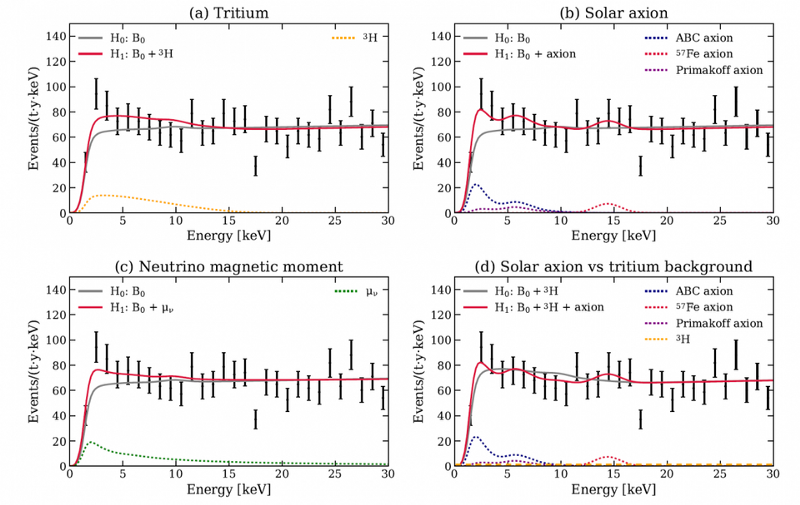
Just two years ago, working with the previous incarnation of the XENON experiment (XENON1T), a bit of a surprise emerged: with what was then the most sensitive dark matter direct detection effort ever, an excess of events was seen at particularly low energies: just about 0.5% of the rest mass equivalent of the electron. While some people immediately jumped to the wildest conclusion imaginable — that it was some exotic type of dark matter, like a pseudoscalar or a vector bosonic-like particle — the experimental collaboration was far more measured and responsible.
They talked about the exotic possibilities, sure, including solar axions and a possibility that neutrinos had an anomalous magnetic moment, but they also made sure to fold in related pre-existing constraints on such scenarios. They talked about possibilities that the signal was caused by a hitherto unaccounted for background source of contamination, with tritium in the surrounding pure water being one interesting source. (For the size of the experiment, which included some ~1028 xenon atoms at the time, only a few thousand tritium molecules, total, could have caused that signal.)
But the XENON collaboration didn’t stop there. They made it their priority to better quantify and reduce their background, and knew that the next iteration of their experiment would answer the question for good.

Now, in 2022, despite more than two years of a global pandemic, the XENON collaboration has come through in sparkling fashion. They’ve reduced their background so successfully that it’s improved by a factor of ~5 from just two years ago: an almost unheard of improvement for an experiment of this scale. Free neutrons, one of the greatest sources of contamination, have been better quantified and understood than ever, and the team came up with a brand new system to reject that type of background.
Rather than hunting for “ghosts in the machine” that may have been present in their last effort, they simply learned their lessons and did a superior job this time.
The results?
Quite simply, they showed that whatever was causing the slight excess at low energies in the previous experiment was not a signal that recurred in this iteration, thoroughly demonstrating that it was part of the unwanted background, not a signal of some new type of particle striking a xenon nucleus in their apparatus. In fact, the background that does remain is so well-understood that it’s now dominated by second-order weak decays: where either a xenon-124 nucleus captures two electrons simultaneously, or a xenon-136 nucleus sees two of its neutrons radioactively decaying at once.

All of this, together, means three things for the experiment.
- The XENON collaboration has now shattered the record — their own record, mind you — for the most sensitive direct detection dark matter experiment ever conducted. Never before have so many particles been kept under such pristine conditions, and had their properties measured so precisely over time. Many other collaborations involved in the search for particle dark matter should be looking to XENON as the poster child for how to do it right.
- The idea that XENON, in 2020, detected something novel that could point to new physics, has finally been put to bed by none other than the XENON collaboration themselves. There had been hundreds, if not thousands, of theoretical papers attempting to concoct a variety of wild explanations for what the excess could be, but none of them advanced our understanding of the Universe even a tiny bit. The resolution came experimentally, showcasing the power of a quality experiment once again.
- And when it comes to the question of dark matter, these latest results from the XENON collaboration have given us, across a wide variety of metrics, the tightest constraints ever on what sort of particle properties massive dark matter particles are still permitted to have while still being consistent with this experiment.
All around, it’s a spectacular win for direct detection endeavors to better understand the Universe.
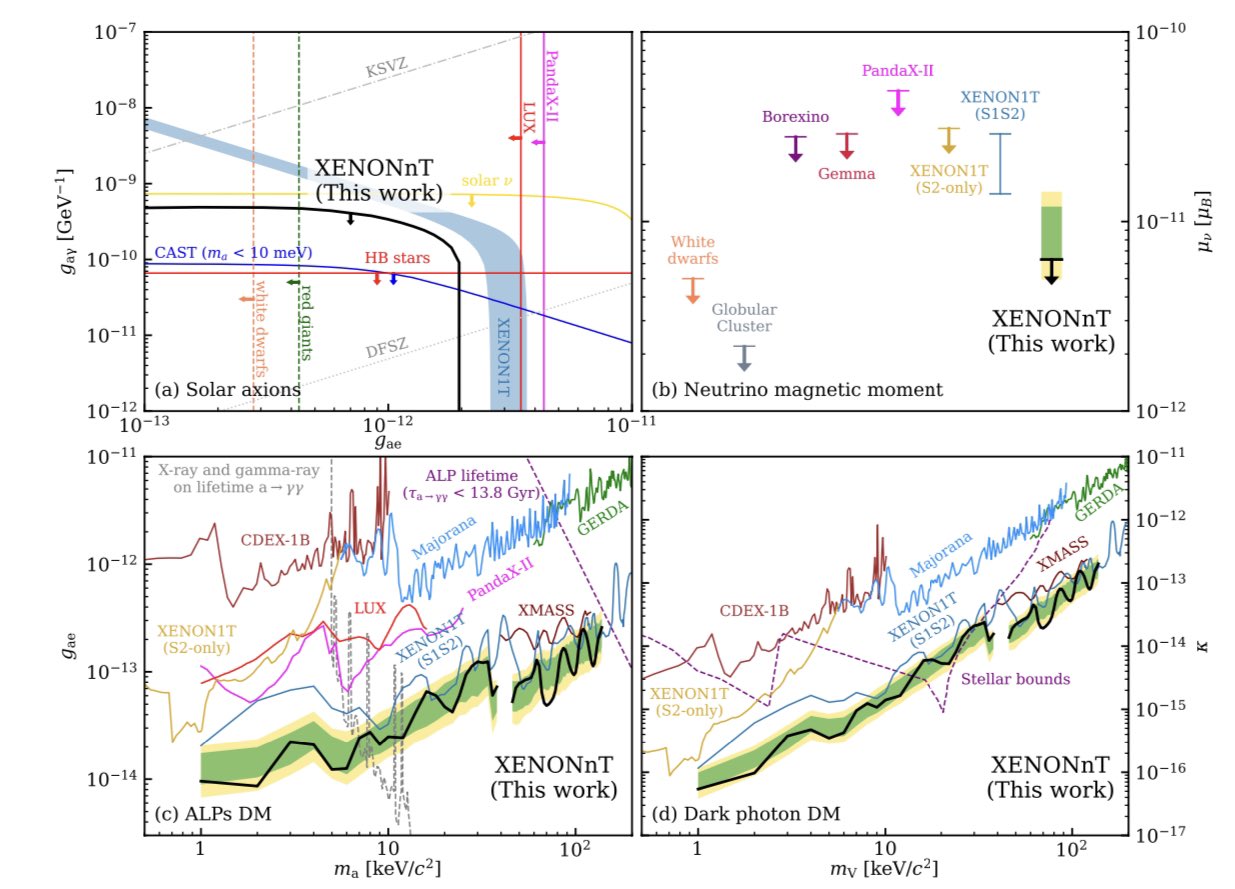
Perhaps the best feature of all is how scrupulously the XENON collaboration conducted this research: they did a completely blind analysis. That means they carefully conducted all of their accounting for what their expectations and understanding were before ever looking at the data, and simply piped that data in when the critical moment came. When they “unblinded” themselves and saw the results, and saw how low their background was, how good their signal was, and how the previous “hints” simply didn’t appear in the newest data, they knew they had solved their prior issues. It’s a wild victory for experimental physics, and an incontrovertible victory for the process of science.
There are many people — even some scientists — who decry “null results” as not being important to science, and those are the people who must be kept the farthest away from experimental physics at all costs. Physics has been and will always be an experimental science, and the frontiers of it are always just beyond wherever we’ve most successfully looked. We have no way of knowing what lies beyond the known frontiers, but whenever we can look, we do, as our curiosity cannot be sated by mere pontification. The Universe isn’t just out there for us to explore, but right here: within every subatomic particle on Earth. With a tour-de-force new set of results, XENON has just catapulted the science of searching for new particles into a realm it’s never been in before: to where ideas that could only be imagined a few years ago have now been excluded by experiment, with much more still to come.
